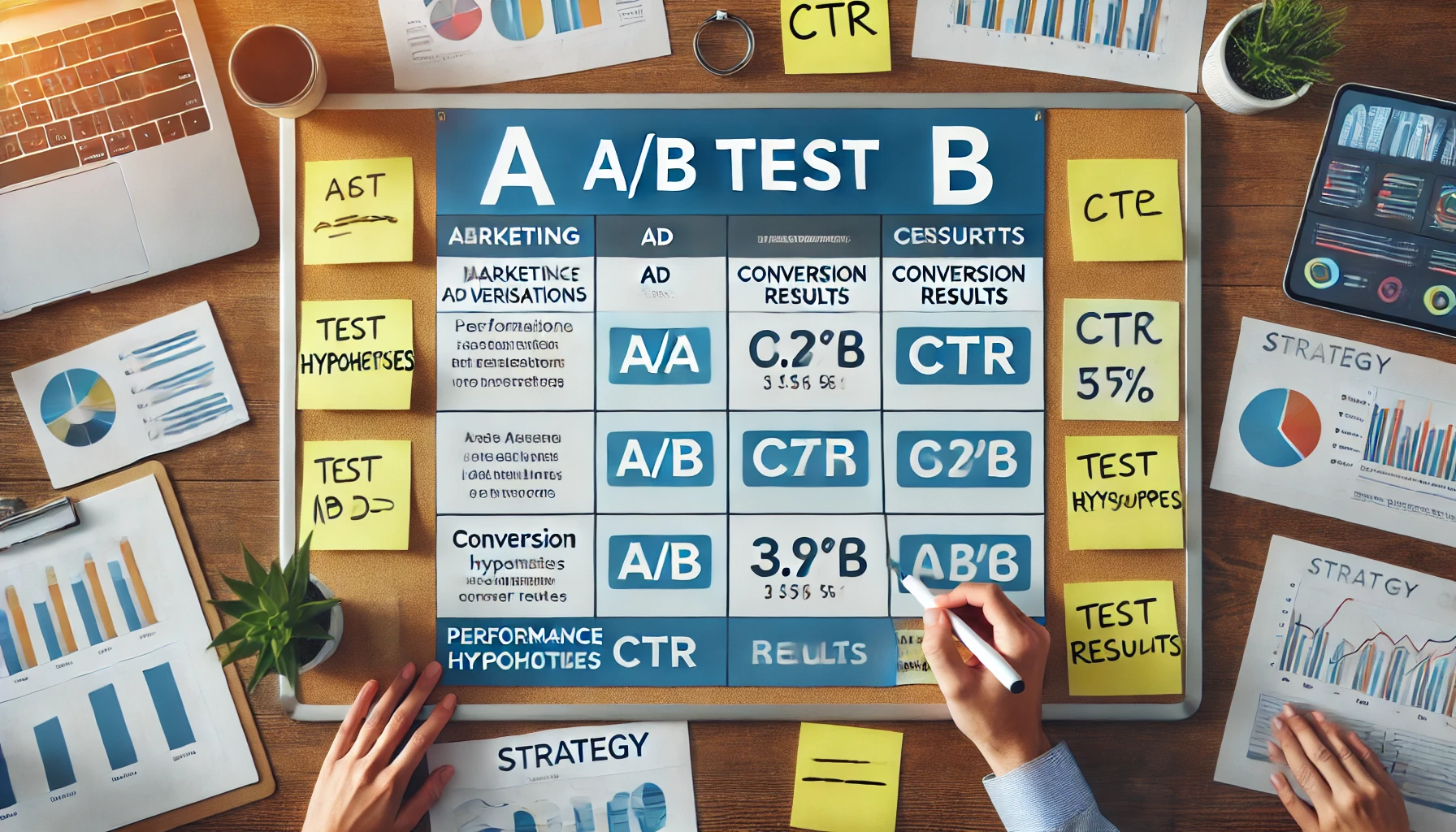📌 Introduction
A/B testing (also known as split testing) is one of the most powerful strategies in traffic management and digital advertising. It allows marketers to compare different versions of an ad, landing page, or campaign element to determine which one performs better.
Without A/B testing, you might be relying on guesswork instead of data-driven decisions. In this article, you’ll learn how A/B testing works, the key elements to test, and the best tools to optimize your campaigns for maximum conversions.
🎯 Why A/B Testing is Crucial for Traffic Management
✔ Increases Conversions – Identifies the best-performing ad variations.
✔ Reduces CPC (Cost Per Click) – Optimized ads typically cost less.
✔ Eliminates Guesswork – Uses real data to make informed decisions.
✔ Improves User Experience – Helps refine landing pages and CTAs.
🔎 1. How A/B Testing Works
A/B testing involves running two or more versions of an ad or landing page simultaneously and comparing performance.
✅ How to Set Up an A/B Test:
✔ Select one variable to test (e.g., ad headline, CTA, or image).
✔ Create two versions (A and B) with one key difference.
✔ Run both versions to a similar audience.
✔ Analyze results and choose the best-performing variation.
🛠 Recommended Tools:
- Google Optimize – Runs A/B tests for landing pages.
- Facebook Ads A/B Testing Tool – Compares different ad creatives and targeting.
- AdEspresso – Automates split testing for Facebook & Instagram Ads.
📊 2. Key Elements to Test in A/B Experiments
🖼 1. Ad Creatives
✔ Test different images vs. videos.
✔ Compare bold colors vs. minimalistic designs.
✔ Try lifestyle vs. product-focused visuals.
📝 2. Headlines & Ad Copy
✔ Experiment with short vs. long headlines.
✔ Use question-based vs. statement headlines.
✔ Compare different value propositions (e.g., “Save 20% Today!” vs. “Get Free Shipping”).
🎯 3. Call-to-Action (CTA)
✔ Test different CTA buttons (“Shop Now” vs. “Learn More”).
✔ Compare urgency-based CTAs (“Limited Offer” vs. “Available Anytime”).
🛠 Recommended Tools:
- Canva & Adobe Express – Helps create test variations for visuals.
- Hemingway Editor – Ensures ad copy is clear and concise.
📢 3. Analyzing A/B Test Results
Once your test runs for a sufficient time, it’s essential to analyze performance data.
✅ Key Metrics to Track:
✔ Click-Through Rate (CTR) – Measures ad engagement.
✔ Conversion Rate (CVR) – Tracks how many users take action.
✔ Cost Per Click (CPC) – Helps identify the most cost-effective ad.
✔ Return on Ad Spend (ROAS) – Evaluates profitability.
🛠 Recommended Tools:
- Google Analytics – Provides in-depth traffic insights.
- Facebook Ads Manager Reports – Breaks down ad performance by audience segment.
🚀 Conclusion
A/B testing is an essential technique for improving ad performance, lowering costs, and increasing conversions. By systematically testing ad creatives, headlines, CTAs, and landing pages, marketers can optimize their campaigns based on real data.
🔥 Key Takeaways
✔ Always test one variable at a time for accurate results.
✔ Track CTR, CPC, and conversion rates to determine winners.
✔ Use Google Optimize & Facebook A/B Testing for structured experiments.
✔ Apply insights from tests to refine future campaigns.
By implementing A/B testing, you’ll create more effective ads and landing pages that generate better ROI! 🎯
